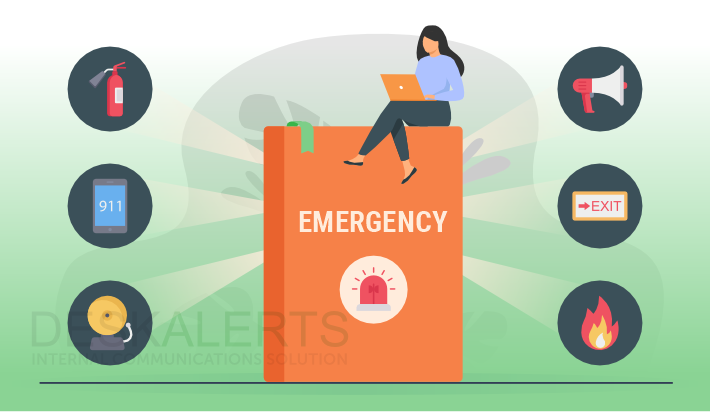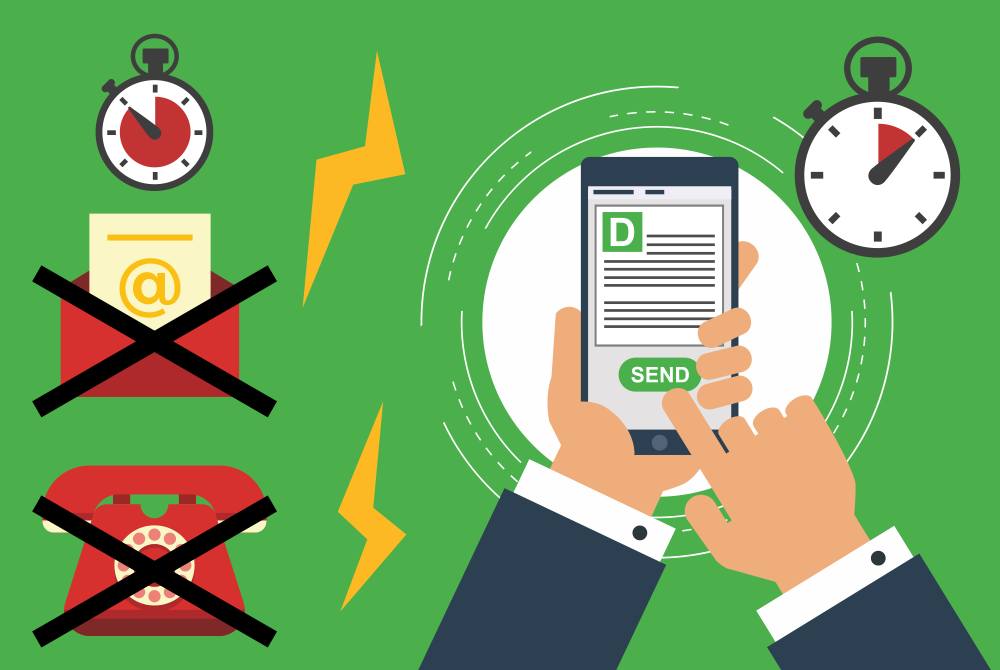
In today's unpredictable world, emergencies can occur at any time, without notice, disrupting normal operations and posing serious risks to employees, customers, and assets. Whether it's a natural disaster, a medical emergency, or a security threat, having a comprehensive emergency response plan in place is essential for organizations of all sizes and across all industries.
An emergency preparedness and response plan is necessary as it outlines clear protocols and procedures to follow during crises, ensuring the safety and well-being of everyone involved while minimizing potential damage and disruptions.
Table of contents
What is an emergency response plan?
What is the purpose of an emergency plan?
What happens if your company fails to implement an emergency response plan?
A step-by-step guide to creating an emergency preparedness and response plan
What is an emergency response plan?
Emergency response plans are structured strategies designed to guide an organization's actions in the event of various emergencies, ranging from natural disasters like earthquakes and hurricanes to man-made crises such as fires, chemical spills, or security threats.
An emergency preparedness plan for the workplace outlines specific procedures and protocols to be followed by employees, managers, and other stakeholders during emergencies, with the overarching goal of ensuring the safety of individuals, protecting assets and minimizing disruptions to business operations.
What is the purpose of an emergency plan?
There are several important reasons why every company should have an effective emergency management plan in place:
- Mitigating risks and vulnerabilities by identifying potential hazards and establishing proactive measures.
- Responding more effectively and efficiently during emergencies, reducing confusion and panic among employees.
- Demonstrating a commitment to employee safety and well-being, fostering a culture of preparedness and resilience.
- Enhancing compliance with regulatory requirements and industry standards, avoiding legal and financial consequences.
- Safeguarding the organization's reputation and credibility by demonstrating its ability to handle crises professionally and responsibly.
What happens if your company fails to implement an emergency response plan?
Now you know what is a response plan, it’s important to understand the consequences of not having one. Failing to have an emergency response plan in place can expose your company to a range of serious consequences, both in terms of human safety and financial impact. Without a structured plan to guide actions during emergencies, the organization risks being ill-prepared to effectively manage crises, resulting in potentially devastating outcomes.
A safety emergency response plan can include:
- Jeopardizing the safety and well-being of employees, customers, and other stakeholders are jeopardized. In the absence of clear procedures and protocols, individuals may not know how to react or where to seek help during emergencies, leading to confusion, panic, and increased risk of injury or harm.
- Significant disruptions to business operations. From property damage to supply chain interruptions, emergencies can cause downtime, lost revenue, and increased expenses for repairs and recovery efforts.
- Damage to the company’s reputation and credibility. Failure to adequately address emergencies may erode trust among stakeholders, including customers, investors, and regulatory authorities, leading to long-term reputational harm and potential legal repercussions.
20 BEST SAFETY TIPS FOR WORK IN 2024
A step-by-step guide to creating an emergency preparedness and response plan
Crafting an effective emergency response plan is essential for any organization to ensure the safety of its employees, protect assets, and maintain business continuity during times of crisis. You can use a company emergency response plan template to save time. Here's a step-by-step guide to help with emergency response planning so you can develop a comprehensive plan tailored to your organization's needs:
- Assess risks and hazards:
- Identify potential hazards that could affect your organization, such as natural disasters, technological failures or security threats.
- Evaluate the likelihood and potential impact of each hazard, considering factors like location, severity and frequency of occurrence.
12 RISK COMMUNICATION PRINCIPLES
- Establish objectives:
- Define clear objectives for your emergency response plans, outlining what you aim to achieve during emergencies.
- Consider goals such as ensuring the safety of employees and visitors, protecting critical infrastructure and assets and minimizing disruptions to business operations.
- Form an emergency planning team:
- Assemble a dedicated team responsible for developing, implementing and maintaining the business emergency response plan.
- Include representatives from relevant departments, such as IT, communications, operations, security, human resources and facilities management.
- Gather information:
- Collect essential information needed for emergency response planning, including floor plans, contact lists, utility shut-off procedures and emergency service providers. This information will need to be filled in on your emergency response plan template.
- Ensure all team members have access to up-to-date information and resources necessary for effective response.
- Develop response procedures:
- Create detailed procedures outlining specific actions to be taken before, during and after emergencies.
- Define roles and responsibilities for team members, specifying who will initiate the response, coordinate communication and oversee different aspects of the plan.
- Communicate protocols:
- Training and drills:
- Conduct regular training sessions and emergency drills to familiarize employees with response procedures and protocols.
- Practice scenarios relevant to your organization's specific risks and hazards to enhance preparedness and effectiveness.
EMPLOYEE TRAINING SOFTWARE
- Resource allocation:
- Identify and allocate necessary resources, including personnel, equipment, supplies, and facilities to support emergency response efforts.
- Establish procedures for mobilizing resources quickly and efficiently during emergencies.
- Coordinate with external partners:
- Establish relationships with local emergency services, government agencies and community organizations to coordinate response efforts and access additional support.
- Share relevant information and collaborate on planning and preparedness activities to enhance overall resilience.
- Review and revision:
- Regularly review and update the emergency response plan template to reflect changes in risks, resources, or procedures.
- Incorporate lessons learned from drills, exercises and real-world incidents to improve effectiveness and responsiveness.
- Documentation and distribution:
- Document your emergency response plans thoroughly, including procedures, protocols, contact information, and supporting documents. You can use an emergency plan example template as the basis so you don’t have to start from scratch.
- Ensure the plan is accessible to all relevant personnel, either in printed form or electronically and distribute copies as needed.
- Testing and evaluation:
- Conduct regular tests and evaluations of your emergency response plans to assess its effectiveness and identify areas for improvement.
- Solicit feedback from team members, stakeholders, and participants to refine procedures and enhance overall preparedness.
By following these steps and customizing the emergency response plan template to fit your organization's unique needs, you can develop an effective emergency management plan that helps protect lives, safeguard assets, and maintain business continuity during emergencies.
How DeskAlerts tools can help with your emergency response
DeskAlerts plays a crucial role in bolstering businesses' risk management strategies. Through its robust notification system, DeskAlerts ensures swift dissemination of critical information during emergencies, enabling timely response to mitigate risks:
- DeskAlerts channels like screensavers, corporate lockscreens, pop-up notifications, digital signage and wallpapers can be used to raise awareness all year round so that people know what to do when there is an emergency situation.
- It facilitates instant communication across various channels, ensuring that stakeholders receive vital alerts promptly, reducing reaction time in crisis situations.
- DeskAlerts' customizable features allow tailored notifications for specific risks, enhancing preparedness and response efficiency.
- Its reporting and tracking capabilities enable businesses to assess the effectiveness of emergency management protocols and refine them accordingly.
- You can save time in a crisis by using pre-prepared templates that have been made in advance.
- Save even more time by using a shortcut “panic button” on your desktop or on a mobile app so you can send emergency notifications in just two seconds.
- The panic button has recently had enhancements that allow administrators to configure it so that alerts can be sent to specific users or groups.This means you can send response teams the types of information they need to act on that is different to the general information you would send to the entire organization in an emergency.
- Administrators can monitor any type of DeskAlerts notification to determine who has activated an alert, and who has received and acknowledged a message so that a clear line of communication and response can be maintained.
Ultimately, DeskAlerts empowers organizations to proactively address threats, safeguard assets, and maintain operational continuity, fostering resilience in dynamic environments.
Conclusion
The absence of an emergency response plan leaves an organization vulnerable to a host of negative consequences, underscoring the critical importance of proactive preparedness measures to safeguard both people and assets. It’s worthwhile to dedicate time and effort to emergency response planning so you can be on the front foot in a crisis.
FAQ
What is the emergency response plan?
An emergency response plan is a strategy that outlines the procedures and protocols to be followed in the event of various emergencies that can begall an organization such as natural disasters, accidents, or security threats. It includes measures for evacuations, communication protocols, emergency contacts, medical assistance, resource allocation and any other steps necessary for the organization to get through the emergency.
What is the emergency response procedure?
An emergency response procedure is a set of predefined actions and protocols designed to be implemented in the event of an emergency. It outlines step-by-step instructions for responding to specific types of emergencies, such as fires, natural disasters or medical incidents.
These procedures can be found in an emergency response plan template and typically include measures for evacuation, communication, emergency services coordination, and ensuring the safety and welfare of individuals involved.
What are the 10 steps for developing the emergency response plan?
The 10 steps for developing the emergency response plan are:
- Identify potential hazards and assess their likelihood and potential impact.
- Define clear objectives and goals for the emergency response plan.
- Form a dedicated team responsible for developing and implementing the plan.
- Establish communication protocols and channels for disseminating information during emergencies.
- Develop procedures and routes for safe and efficient evacuation if necessary.
- Coordinate with local emergency services and authorities for support and assistance.
- Conduct regular training sessions and drills to ensure preparedness and familiarity with procedures.
- Identify and allocate necessary resources, including personnel, equipment, and facilities.
- Regularly review and update the plan to reflect changes in risks, resources, or procedures.
- Document the plan comprehensively and ensure it is accessible to all relevant personnel.
What are the 5 steps of emergency response?
These are the 5 steps of emergency response:
- Assess the situation: Quickly evaluate the nature and severity of the emergency to determine appropriate actions.
- Establish communication: Establish clear communication channels to relay information and coordinate response efforts.
- Implement response plan: Execute predefined procedures outlined in the emergency response plan template, including evacuation, first aid, or containment measures.
- Mobilize resources: Activate necessary resources, such as personnel, equipment, and emergency services, to address the situation effectively.
- Monitor and make necessary adjustments: Continuously monitor the situation, adjust response efforts as needed, and provide updates to stakeholders.
 Caroline Duncan
Caroline Duncan






-6.jpg)
